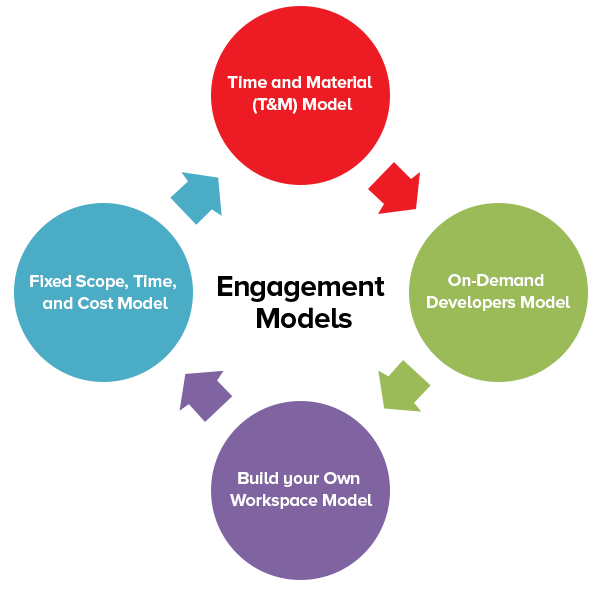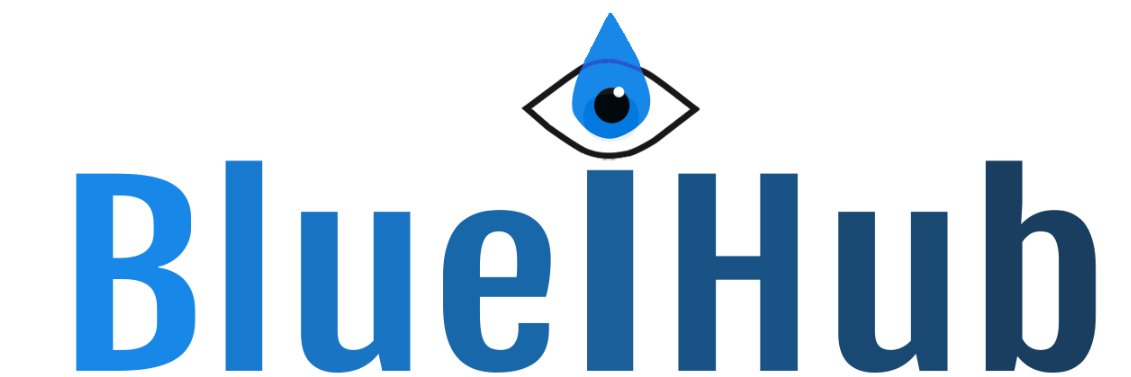Engagement Models: Varieties, Significance, and Benefits

Your company faces a challenge that needs resolution. You opt for an engagement model, enlisting a team of experts to tackle the issue. Yet, numerous engagement models exist, each with its advantages and disadvantages. This article aims to enhance your comprehension of the meaning, operation, and suitable applications of these engagement models.
Engagement Model Definition
When you delve into the concept of engagement models, you’ll find they serve as a method for collaborating with clients. They establish a framework for our collaborative efforts and outline contingency plans for unforeseen challenges.
These models encompass not only payment structures but also project control aspects. They come in various forms, shaped by industry, services rendered, and client requirements. Although some commonalities may exist across industries, the specifics can vary greatly based on your work type and client expectations.
Engagement models extend beyond mere payment methods. They also govern the dynamics of the client relationship and outline protocols for addressing potential issues. For instance, how would disputes or change requests be handled? Do you possess decision-making authority in such cases? The timeframe for clients to make decisions about project continuation is also defined within engagement models, ensuring mutual clarity throughout the project’s lifecycle.
Types of Engagements Models
Extended Team Model – This approach becomes relevant when you require a team with diverse skill sets and expertise. It’s especially useful if you have a substantial workload but lack a clear roadmap for the future. This model encompasses a wide array of professionals, ranging from designers and developers to testers. It also includes specialists such as project managers and, where applicable, customer support personnel. The beauty of this engagement model lies in its provision of full autonomy to clients in their product development journey. They gain access to a comprehensive pool of resources necessary for crafting outstanding solutions.
Dedicated Team Model – In contrast, the dedicated team model relies solely on the resources already furnished by your chosen vendor company. This streamlined approach simplifies the collaboration for both parties by consolidating everything within a single, self-sufficient group. It eliminates the involvement of third parties, resulting in cost savings. However, this efficiency comes at the expense of flexibility in hiring decisions, making it challenging to expand the team during production without incurring additional costs beyond the primary vendor’s services.
Extended team model
The extended team model represents an approach to software development that entails enhancing an existing in-house team with remote resources, forming a cohesive and collaborative development unit. This model empowers businesses to harness the knowledge and skills of remote team members who seamlessly integrate with the internal team, facilitating effective project delivery.
Within the extended team model, remote team members typically concentrate on specific tasks or projects under the guidance of the internal team. They become part of the existing team structure, aligning their efforts with the overarching project objectives and goals. This model affords flexibility in scaling the team to match project demands, enabling businesses to expand or contract the team size as necessary.
Key elements of the extended team model encompass:
- Collaboration: Remote team members actively engage with the internal team, participating in meetings, discussions, and decision-making processes. Their contributions foster a collaborative working environment.
- Communication: Effective communication serves as a cornerstone for the extended team model’s success. Various communication tools and platforms facilitate seamless interactions between remote and internal team members. Regular meetings, video conferences, and instant messaging enable real-time communication and minimize communication gaps.
- Skill and Expertise: The extended team model grants businesses access to a wider talent pool by enlisting remote professionals with specialized skills and expertise. This ensures the team possesses the necessary competencies to address various aspects of the project effectively.
- Cost Efficiency: By incorporating remote team members, businesses can optimize costs by leveraging offshore or nearshore resources. This model permits cost-effective adjustments to the team size without compromising work quality.
- Flexibility: The extended team model provides flexibility in team composition and resource allocation. As project requirements evolve, businesses can readily adapt the team structure by adding or removing resources, promoting efficient resource utilization and adaptability.
- Time Zone Considerations: When collaborating with a dispersed team, it is essential to consider time zone differences. Effective planning and task scheduling ensure that team members can collaborate effectively despite varying time zones.
The dedicated team model, conversely, entails the remote team operating as an extension of the client’s internal team. The client maintains full ownership and oversight of the project, while the remote team contributes the requisite skills, expertise, and resources for executing development tasks.
Key aspects of the dedicated team model encompass:
- Team Composition: The dedicated team comprises professionals with diverse skill sets, encompassing developers, designers, testers, project managers, and other essential roles. The team is meticulously tailored to meet the specific project requirements.
- Project Ownership: The client retains complete ownership and control over the project, encompassing decision-making, project management, and overall project direction. The remote team operates as a dedicated resource pool, supplying the necessary talent and support for effective project execution.
- Long-Term Collaboration: The dedicated team model typically finds application in long-term projects or ongoing development endeavors. The remote team becomes an integral part of the client’s workflow, closely collaborating with the internal team, fostering a lasting collaborative relationship.
- Seamless Communication: Effective communication assumes paramount importance within the dedicated team model, ensuring smooth coordination between the client’s internal team and the remote team. Regular communication channels, including video conferences, email, and project management tools, are employed to facilitate transparent and timely communication.
- Flexibility and Scalability: The dedicated team model offers flexibility and scalability, empowering the client to adjust the team’s size and composition in response to project demands. Additional resources can be seamlessly onboarded or scaled down as needed, promoting agility and adaptability.
- Cost Efficiency: The dedicated team model affords cost advantages by enabling clients to access a proficient remote team without incurring the overhead costs associated with in-house team recruitment and maintenance. This approach allows businesses to optimize costs while ensuring the delivery of high-quality work.
The dedicated team model empowers businesses to establish a dedicated development team aligned with their project objectives. By leveraging the expertise and resources of a remote team, businesses can expedite project timelines, enhance flexibility, and tap into a broader talent pool while maintaining control over the project’s direction.
This model benefits both clients and vendors. Clients can control costs by paying for specific services, while vendors gain more control over their team’s workloads. Additionally, this model aids companies in managing staffing levels during demand peaks.
Dedicated team model
Within the dedicated team model, the remote team seamlessly integrates with the client’s internal team, operating as an extension that collaboratively follows the client’s directives and requirements. The client retains full ownership and authority over the project, encompassing decision-making, project management, and the overarching project trajectory. Simultaneously, the remote team serves as a dedicated reservoir of talent and resources, offering the essential skills and support needed for proficient project execution.
Key facets of the dedicated team model include:
- Team Composition: The dedicated team comprises professionals with a diverse array of skill sets, encompassing developers, designers, testers, project managers, and other essential roles. This team is meticulously tailored to align with the specific prerequisites of the project.
- Project Ownership: The client retains complete ownership and control over the project, including all aspects of decision-making, project management, and the project’s overall direction. The remote team operates as a dedicated resource pool, furnishing the necessary talent and backing to ensure effective project realization.
- Long-Term Collaboration: The dedicated team model predominantly finds application in long-term projects or continuous development initiatives. The remote team seamlessly integrates with the client’s workflow, working closely alongside the internal team, thereby nurturing a sustained and cooperative relationship.
- Seamless Communication: Effective communication stands as a cornerstone within the dedicated team model, vital for ensuring smooth coordination between the client’s internal team and the remote team. Established communication channels, such as video conferences, email, and project management tools, are actively employed to facilitate transparent and timely communication.
- Flexibility and Scalability: The dedicated team model offers the client a high degree of flexibility and scalability, permitting adjustments to the team’s size and composition in accordance with project demands. Additional resources can be readily brought on board or scaled down as necessitated, thus promoting agility and adaptability.
- Cost Efficiency: The dedicated team model bestows cost benefits upon clients, granting them access to a skilled remote team without incurring the overhead costs associated with in-house team recruitment and maintenance. This approach enables businesses to optimize costs while upholding the delivery of high-quality results.
The dedicated team model empowers businesses to establish a dedicated development team meticulously aligned with their project objectives. By harnessing the proficiency and resources of a remote team, businesses can expedite project timelines, augment flexibility, and tap into a broader pool of talent while retaining control over the project’s direction.
In this model, the team is wholly committed to a single project. While team members may have other commitments in their lives or jobs, during the duration of this specific project, their complete focus is dedicated to it, without distractions or competing priorities.
Fixed price model
The most prevalent engagement model is the fixed price model, which is deployed when there is a well-defined scope of work, and the client possesses a clear understanding of the associated costs. It is also chosen when clients seek to mitigate risk by making an upfront payment for services, which will subsequently be disbursed based on predetermined milestones or deliverables outlined during contract negotiation.
Critical aspects of the fixed price model encompass:
- Scope Clarification: Prior to entering into a fixed price agreement, both the client and service provider must meticulously elucidate and reach a consensus on the scope of work. This entails a comprehensive delineation of project requisites, deliverables, timelines, and any specific milestones or objectives.
- Price Agreement: After defining the scope of work, the service provider furnishes a fixed price proposal encompassing the entire project. The pricing is determined by considering factors such as estimated effort, complexity, and the resources imperative for executing the project in accordance with the agreed-upon scope.
- Project Timeline: The fixed price model generally entails a pre-established timeline for project culmination. Both parties establish a lucid comprehension of the anticipated project duration, accounting for any deadlines or time-sensitive prerequisites.
- Cost Assurance: The chief benefit of the fixed price model is its provision of cost certainty to the client. The mutually settled price remains unaltered throughout the project’s duration, irrespective of potential alterations or challenges that may arise during execution.
- Payment Tied to Deliverables: In numerous instances, payments within the fixed price model are linked to the successful completion of specific project deliverables or milestones. Payments are typically made incrementally or upon the attainment of predetermined project milestones. This approach ensures transparency and guarantees that the client remunerates solely for accomplished work.
- Change Control: While the fixed price model bestows cost certainty, any modifications or augmentations to the initial scope of work could potentially result in supplementary expenses. To address this, change control mechanisms are instituted to handle change requests or adaptations to the project. This process ensures that both parties concur on adjustments concerning cost and timeline.
The fixed price model is often an apt choice for projects characterized by well-defined requirements and a crystal-clear comprehension of anticipated outcomes. It affords clients a foreseeable budget and diminishes financial vulnerabilities associated with unforeseen costs. Nonetheless, it may necessitate meticulous scope definition and adept change management to accommodate any possible alterations or deviations from the initial project plan. Effective communication and collaboration between the client and service provider stand as pivotal elements in the triumph of the fixed price model.
Time and material model
The time and material (T&M) model represents a common pricing and project management approach widely employed in fields such as software development and various professional services. Under this model, the client remunerates the service provider based on the actual time expended by the provider’s resources, as well as any expenses or material costs incurred throughout the project.
The time and material model holds the distinction of being the prevailing engagement model embraced by software development firms. It finds application in scenarios where the client possesses an indeterminate vision of their requirements, entrusting the service provider with the prerogative to make informed decisions on their behalf. The billing encompasses the time devoted to development, along with supplementary expenditures such as training, maintenance, or even hosting, if necessitated. The model’s advantage lies in its absence of fixed costs, granting clients the latitude to modify their preferences regarding certain features during the development process without any upfront financial commitment.
Key facets of the time and material model encompass:
- Hourly Rate or Resource Rate: The service provider levies an hourly rate or resource rate for the duration spent by their team members engaged in project tasks. These rates are typically determined based on the skill level and expertise of each resource.
- Transparency and Flexibility: The T&M model embodies transparency, granting clients insight into the actual hours expended by the service provider’s resources. This transparency fosters flexibility, enabling the accommodation of alterations or amendments to the project scope as it unfolds.
- Tracking and Invoicing: The service provider rigorously maintains comprehensive time tracking records to accurately compute the billable hours. Invoices are formulated in accordance with the hours worked, complemented by any supplementary costs for materials or expenses incurred, such as software licenses or hardware procurements.
- Agile Project Management: The T&M model frequently aligns harmoniously with agile project management methodologies. It facilitates iterative development and regular feedback loops, affording clients an active role in the project, and the capacity to implement adjustments grounded in evolving requisites.
- Cost Control: While the T&M model eschews the provision of a fixed project price, it introduces cost control by allowing clients to delineate budget constraints or maximum spending thresholds. This ensures that expenditures remain within the mutually agreed budget parameters, thereby conferring a degree of financial oversight.
- Change Management: Given the T&M model’s adaptability and openness to project adjustments, the establishment of change management protocols is imperative. These protocols facilitate the management of alterations to the project’s scope or objectives, which may engender additional hours or costs. Such changes necessitate clear communication and consensus from both parties involved.
The time and material model is ideally suited for ventures characterized by fluid or nebulous requirements, wherein adaptability and malleability are pivotal. It empowers clients to refine project particulars as necessary and compensates for actual work executed. Effective communication and collaboration between the client and service provider stand as indispensable elements in managing expectations and ensuring triumphant project completion within the predefined budget and timeline.
How to Select The Right Engagement Model?
When deciding on the most suitable engagement model, take into account the following factors:
- Project Complexity: The complexity of your project should be a significant determinant in your choice of an engagement model. Projects with higher complexity often benefit from an agile approach. Complexity can manifest in various ways, such as venturing into uncharted territory or operating within an industry where there is minimal precedent for your objectives. In such cases, opting for agile methods is prudent. However, if your organization lacks extensive experience with agile methodologies (or any other methodologies), commencing with smaller projects allows the team to acclimate to this new approach before tackling more substantial endeavors once they have garnered experience.
- Project Size: Agile methodologies are most effective for projects that possess relatively modest scale and duration. Consequently, it is advisable not to employ them for projects that lack a clearly defined endpoint. For endeavors characterized by indefinite timelines, alternative methodologies like waterfall or the Rational Unified Process (RUP) should be considered.
- Team Characteristics: The composition and experience level of your team constitute pivotal factors in the suitability of an engagement model. If your team has not previously utilized an agile approach, initiating with smaller projects offers a practical path for team members to become accustomed to this novel working method. Subsequently, as they accumulate experience, they can confidently undertake more expansive projects.
- Project Scope: Agile methodologies are most effective for projects that possess relatively modest scale and duration. Consequently, it is advisable not to employ them for projects that lack a clearly defined endpoint. For endeavors characterized by indefinite timelines, alternative methodologies like waterfall or the Rational Unified Process (RUP) should be considered.
- Project Environment: The context in which your project operates should align with the chosen engagement model. Agile methodologies thrive in settings where projects exhibit moderate scope and duration. Conversely, for projects that lack a well-defined conclusion, considering alternative methodologies like waterfall or RUP is recommended.
In summary, the selection of an engagement model should be a deliberate process, taking into account project complexity, size, team characteristics, project scope, and the project’s operating environment. By carefully weighing these factors, you can determine the most appropriate approach to ensure project success.







